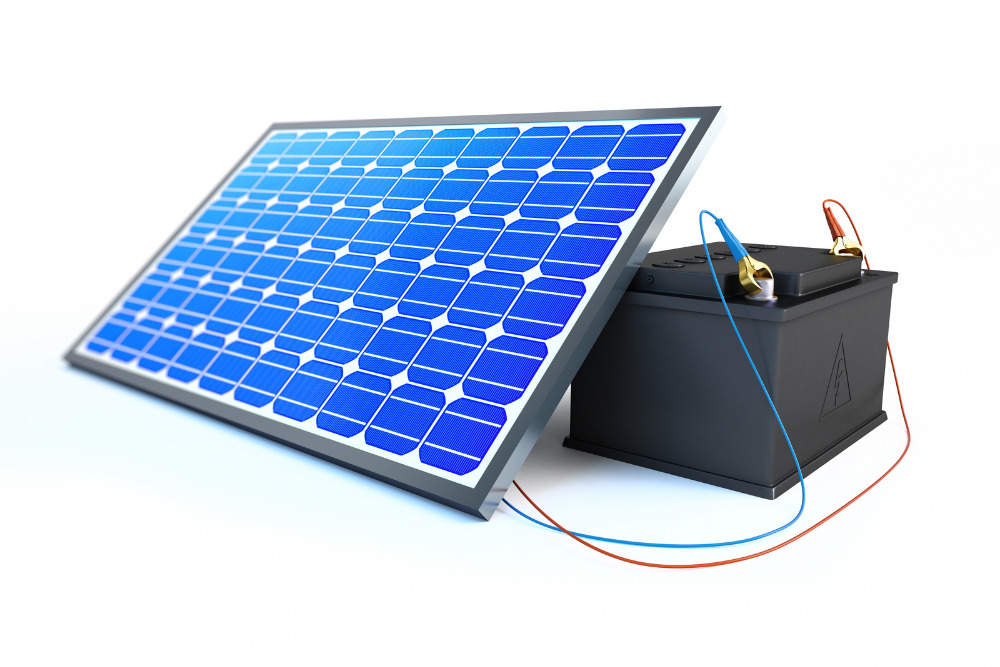As solar power gains popularity, many homeowners are seeking efficient ways to store excess energy generated by their solar panels. Battery storage systems are a key solution, enabling you to use stored solar energy during nighttime or power outages, reducing your reliance on the grid, and maximizing energy savings. Here, we’ll explore the most popular battery storage options for solar power systems, including their benefits, features, and how to choose the right one for your needs.
1. Lithium-Ion Batteries: Efficiency and Durability
Lithium-ion batteries are the most popular choice for solar energy storage due to their high efficiency, longevity, and compact size. Used in devices like smartphones and electric vehicles, they are also ideal for solar storage systems because they can store large amounts of energy in a small footprint. Lithium-ion batteries are known for:
- High Efficiency: With a round-trip efficiency of about 90–95%, they minimize energy loss when storing and retrieving power.
- Long Lifespan: Typically lasting 10–15 years, these batteries offer a solid return on investment.
- Compact Design: Their smaller size makes them easier to install, even in homes with limited space.
Top brands: Tesla Powerwall, LG Chem RESU, and Sonnen Eco.
2. Lead-Acid Batteries: Cost-Effective and Reliable
Lead-acid batteries are a more affordable battery storage option, making them appealing to budget-conscious homeowners. They are available in two types: flooded (wet cell) and sealed (gel or AGM). While they have a shorter lifespan than lithium-ion batteries, they still offer reliable power for off-grid or backup applications.
- Cost-Effective: Lead-acid batteries are generally less expensive than lithium-ion options.
- Proven Technology: Widely used for decades, they offer reliability for various energy storage needs.
- Lower Efficiency: With an efficiency of about 70–80%, they’re less efficient than lithium-ion batteries but can still work well for short-term backup power.
Top brands: Trojan Battery, U.S. Battery, and Rolls Battery.
3. Flow Batteries: Long Duration and Low Degradation
Flow batteries are an innovative option for large-capacity energy storage. Instead of solid electrodes, these batteries use liquid electrolytes that flow through cells to store and release energy. They are ideal for homes with higher energy storage needs and are particularly useful for extended power requirements.
- Long-Lasting: Flow batteries can last 20+ years with minimal degradation.
- High Capacity: They can store a large amount of energy, ideal for homes with significant energy needs.
- Flexible Scalability: Flow batteries can be scaled up to increase storage capacity easily.
Top brands: Redflow and Primus Power.
4. Nickel-Based Batteries: Durability in Extreme Conditions
Nickel-based batteries, including nickel-cadmium and nickel-iron types, are a durable option that performs well in extreme temperatures. Although they have lower energy efficiency than lithium-ion and flow batteries, their robust design makes them suitable for homes in harsh climates or off-grid locations.
- High Durability: Nickel batteries are designed to withstand extreme conditions.
- Low Maintenance: These batteries require less maintenance than some other options.
- Long Lifespan: They can last for up to 20 years with consistent performance, although they are less efficient for daily cycling.
Top brands: Saft and Panasonic.
5. Sodium-Ion Batteries: Eco-Friendly and Emerging
Sodium-ion batteries are a relatively new technology in the solar energy storage field, developed as an eco-friendly alternative to lithium-ion. Using sodium rather than lithium, these batteries are designed to offer similar performance at a lower environmental cost. While still in development, they show promise as a future storage option.
- Environmentally Friendly: Sodium is abundant and non-toxic, reducing the environmental impact of battery production.
- Cost-Effective: Sodium-ion batteries are expected to be cheaper than lithium-ion as production scales.
- Ideal for Mild Climates: While they don’t perform as well in extreme temperatures, they work well in moderate climates.
Top brands: Faradion and Natron Energy.
Choosing the Right Battery Storage for Your Solar Power System
When selecting a battery storage solution for your solar power system, consider the following factors:
- Energy Needs: Assess your household’s average daily energy consumption to determine the storage capacity you require. Higher capacity batteries will offer more extended backup, especially useful in areas prone to power outages.
- Budget: While lithium-ion batteries offer high efficiency and long lifespan, they are more expensive. Lead-acid batteries provide an affordable alternative, while emerging technologies like sodium-ion may offer cost-effective solutions in the future.
- Space Availability: Consider the space you have for battery installation. Lithium-ion batteries are compact, making them ideal for small spaces, while flow batteries may require a larger area.
- Climate: For homes in extreme climates, nickel-based or certain lithium-ion batteries are better suited, as they withstand high or low temperatures better than other types.
- Lifecycle and Maintenance: Evaluate each battery’s expected lifespan and maintenance needs. Lithium-ion and flow batteries generally have lower maintenance requirements, while lead-acid batteries may need periodic servicing.



